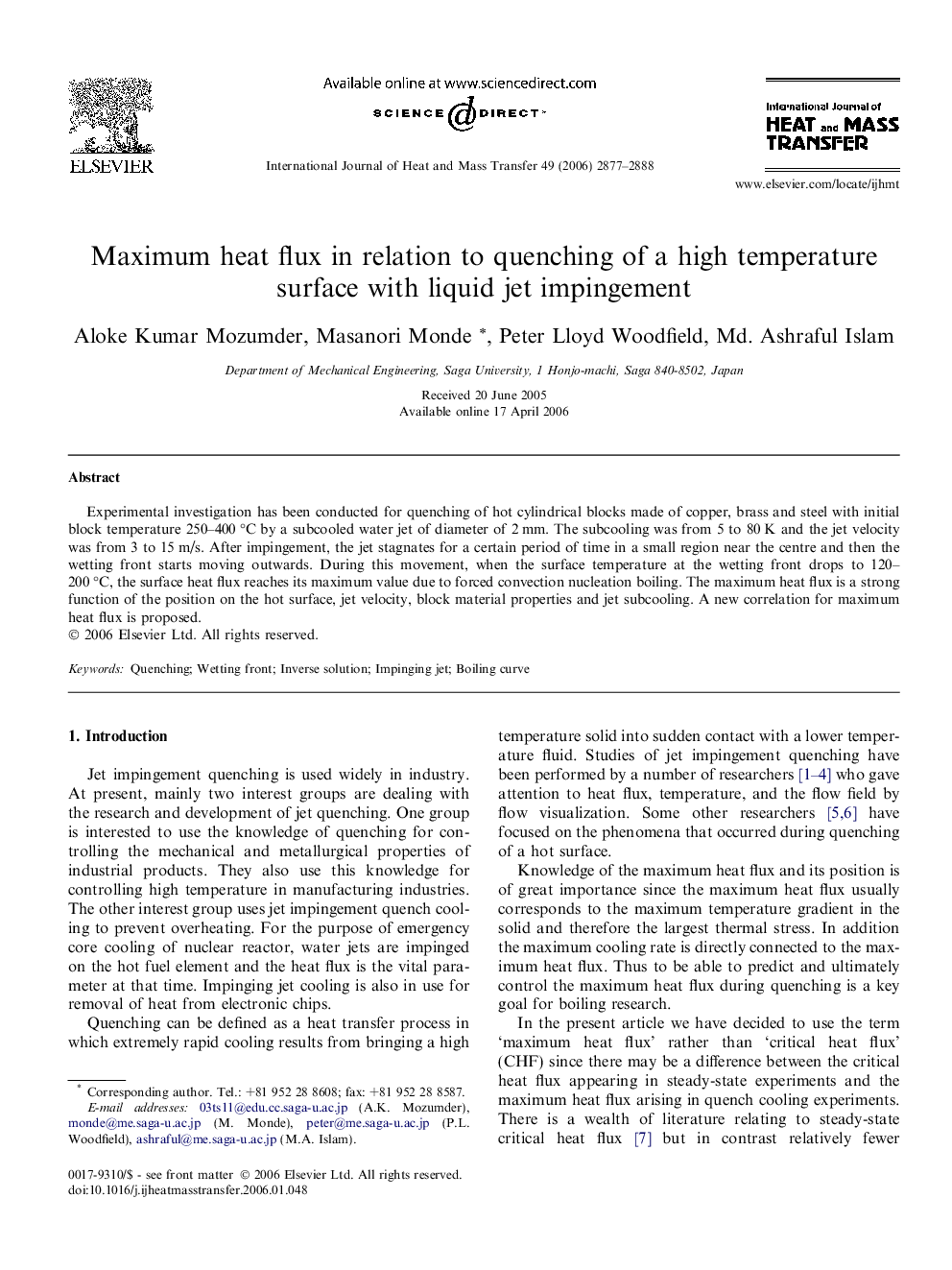| Article ID | Journal | Published Year | Pages | File Type |
|---|---|---|---|---|
| 662098 | International Journal of Heat and Mass Transfer | 2006 | 12 Pages |
Experimental investigation has been conducted for quenching of hot cylindrical blocks made of copper, brass and steel with initial block temperature 250–400 °C by a subcooled water jet of diameter of 2 mm. The subcooling was from 5 to 80 K and the jet velocity was from 3 to 15 m/s. After impingement, the jet stagnates for a certain period of time in a small region near the centre and then the wetting front starts moving outwards. During this movement, when the surface temperature at the wetting front drops to 120–200 °C, the surface heat flux reaches its maximum value due to forced convection nucleation boiling. The maximum heat flux is a strong function of the position on the hot surface, jet velocity, block material properties and jet subcooling. A new correlation for maximum heat flux is proposed.
